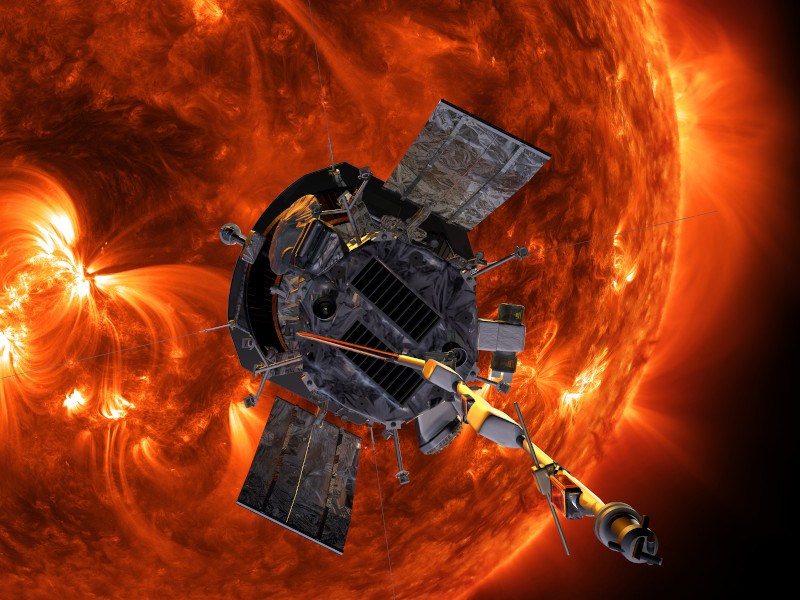
NASA solar probe reveals ‘spectacular’ secrets of the sun
December 6, 2019
NASA’s Parker Solar Probe has sent back its first insights from the edge of the sun.
A NASA spacecraft has begun to unlock the mysteries of the sun’s scorching atmosphere after setting the record for becoming the closest human-made object to the star.
The car-sized spacecraft, called the Parker Solar Probe, blasted off from Earth on 12 August 2018 and is currently around 15m miles away from the sun. Its mission is to help scientists answer questions such as why its corona – the outermost layer of the solar atmosphere – is hotter than its surface.
In a series of papers published in the journal Nature, the researchers said that the probe’s onboard instruments detected “an unexpected series of flips” in the sun’s magnetic field, which they described as “strange”.
They found that at certain periods, the magnetic field suddenly reversed itself by 180 degrees and then, seconds to hours later, flipped back.
The Parker Solar Probe will provide new data on solar activity (Johns Hopkins APL/NASA)
According to the researchers, these so-called “switchbacks” could help shed light on the origins of the solar wind – energetic particles that constantly stream away from the sun. Previous missions have shown that solar wind increases its speed as it leaves the corona, but it has not been clear how this happens.
In one of the new papers, scientists report that changes in the sun’s magnetic fields increase the speed of the solar wind flowing away from the star.
Another paper focuses on the source of so-called “slow” solar wind – with speeds less than 310 miles per second – which until now has been poorly understood.
The researchers found that slow wind originates in holes in the corona found near the equator. These holes, the scientists say, are cooler and less dense than the surrounding corona.
Stuart Bale, a professor of physics at the University of California, Berkeley, and lead author of one of the papers, said: “The first three encounters of the solar probe that we have had so far have been spectacular.
“We can see the magnetic structure of the corona, which tells us that the solar wind is emerging from small coronal holes; we see impulsive activity, large jets or switchbacks – which we think are related to the origin of the solar wind; we see instability – the gas itself is unstable and is generating waves on its own.”
Understanding more about solar activity could help scientists forecast the large eruptions from the sun that pose a threat to satellite and communications systems.
Over the next five years, the probe will continue to make new discoveries as it moves closer to the sun, eventually making its closest approach in the year 2024, as it flies 3.9m miles above the solar surface.
The last time a human-made object came close to the star’s surface...











 What we do
What we do





















 Contact US
Contact US

